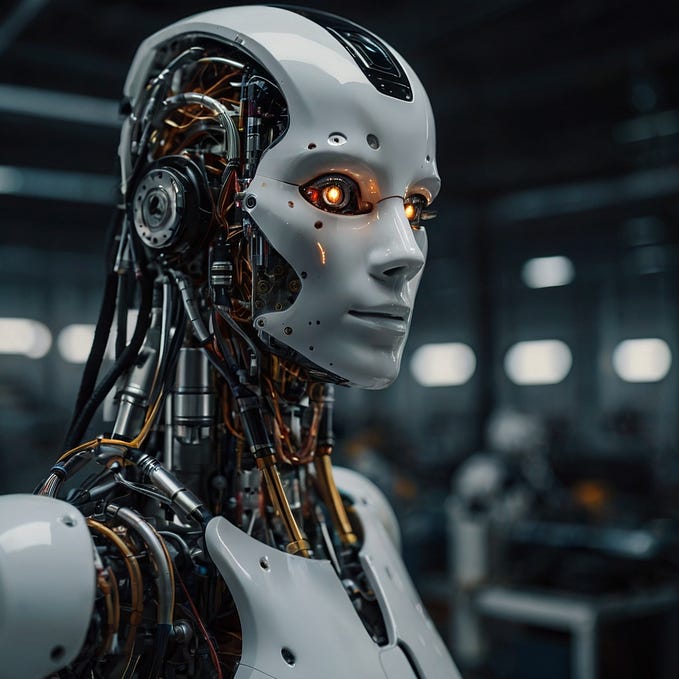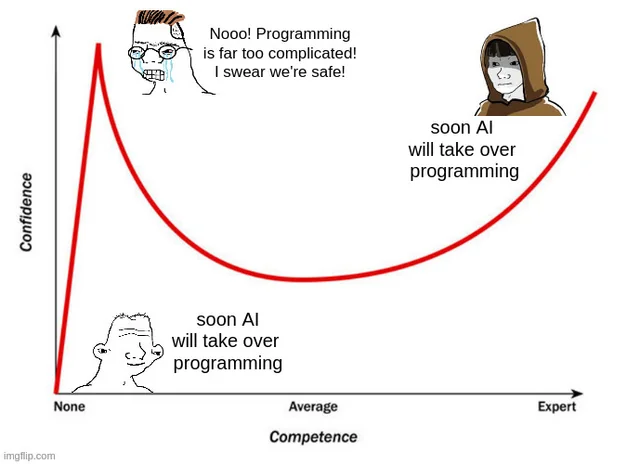AI in Space Exploration — Autonomous Missions and Interstellar Travel

Introduction
Artificial Intelligence (AI) has emerged as a transformative force in numerous fields, and space exploration is no exception. From automating routine tasks to making independent decisions during space missions, AI is playing a crucial role in extending humanity’s reach beyond Earth. As space agencies like NASA, ESA, and private companies such as SpaceX push the boundaries of human space exploration, AI is becoming an indispensable tool in facilitating autonomous missions and, potentially, interstellar travel.
This comprehensive article delves into the ways AI is reshaping space exploration, the role of AI in autonomous missions, and the future of interstellar travel. It provides real-world examples, the latest developments, and insights into the potential of AI in overcoming the challenges of space exploration.
The Role of AI in Space Exploration
How AI Is Transforming Space Exploration
AI’s ability to process vast amounts of data, make real-time decisions, and learn from experience makes it ideal for the demands of space exploration. The complexity of space missions, the limited real-time communication with Earth, and the need for efficient data analysis all highlight the importance of AI.
Key Areas Where AI is Used:
- Autonomous Navigation: Spacecraft can navigate and make course adjustments without human intervention.
- Robotic Assistance: AI-powered robots handle construction, repair, and exploration tasks in space.
- Data Analysis: AI processes massive datasets collected from space missions, identifying patterns and making predictions.
- Spacecraft Maintenance: AI monitors the health of spacecraft, identifying potential failures before they happen.
Real-World Applications of AI in Space
- NASA’s Mars Rovers: AI is used in NASA’s Mars rovers, such as Curiosity and Perseverance. These rovers operate semi-autonomously, navigating the Martian terrain, identifying scientifically interesting rocks, and avoiding obstacles without constant direction from Earth.
- ESA’s AI-Enabled Satellite, EarthCARE: The European Space Agency (ESA) is using AI in its EarthCAREsatellite to help with real-time decision-making for climate monitoring.
- Rosalind Franklin Rover: AI will be essential for the ExoMars Rosalind Franklin rover, set to launch in the future, to explore the Martian surface and autonomously drill beneath it in search of life.
Autonomous Missions: Redefining Space Exploration
What Are Autonomous Space Missions?
Autonomous space missions refer to space exploration efforts where spacecraft, rovers, or robots can operate with minimal human intervention. These missions are critical for exploring distant planets, moons, and other celestial bodies, where communication delays make real-time human control impossible.
Why AI is Essential for Autonomous Missions
Communication Delays
- Mars Communication Delay: Communication between Earth and Mars can take between 4 to 24 minutes, depending on the planets’ positions. This delay makes it impractical to control every movement of a rover or spacecraft from Earth.
- Interstellar Communication: For missions to more distant locations, such as the outer planets or even other star systems, communication delays can extend to years, making real-time human oversight virtually impossible.
AI’s Role in Autonomy
AI can analyze data and make decisions in real time, which is crucial for autonomous operations. It can learn from its environment, anticipate potential problems, and adapt to new situations — essential qualities for autonomous space exploration.
AI in Mars Exploration
Mars Rovers
AI has been a game-changer for Mars rovers. It allows them to navigate the harsh and unpredictable Martian terrain without human input. NASA’s Perseverance rover, for example, uses AI for autonomous driving. It can identify hazards, plan its route, and adjust its course as needed.
- Autonomous Driving: The AI in Perseverance allows it to analyze 3D images of its surroundings and plot a safe path forward.
- Science Prioritization: AI helps the rover decide which samples to collect and which features to prioritize for analysis.
Mars Helicopter: Ingenuity
The Ingenuity helicopter, which flew on Mars as part of NASA’s Mars 2020 mission, was the first aircraft to attempt controlled flight on another planet. It used AI to stabilize itself, navigate the Martian air, and operate independently, providing valuable aerial reconnaissance to support Perseverance’s mission.
AI and Lunar Exploration
The Moon, Earth’s closest celestial neighbor, is another target for AI-enabled missions. NASA’s Artemis program, which aims to return humans to the Moon by 2025, will rely on AI to ensure the success of robotic missions leading up to crewed landings.
- AI-Powered Robots: AI-driven robots are expected to play a key role in lunar construction projects, such as building habitats for future astronauts or assembling infrastructure for a lunar base.
- AI in Lunar Navigation: AI will guide rovers exploring the Moon’s surface, especially in its polar regions where sunlight is scarce and terrain conditions are difficult.
Deep Space Exploration: The Challenges of Autonomy
The Challenges of Deep Space
As space missions venture farther from Earth, the need for autonomy grows. AI can support deep space missions by performing tasks such as:
- Fault Detection: AI can detect system anomalies and initiate corrective actions without waiting for instructions from Earth.
- Dynamic Reconfiguration: In the event of equipment failure, AI can reroute systems to ensure mission continuity.
The Voyager Probes: Pioneers of Space Autonomy
NASA’s Voyager probes, launched in 1977, are among the earliest examples of spacecraft operating autonomously. While their onboard AI is primitive compared to today’s standards, they have been able to navigate through space for over 40 years without human control, sending back invaluable data from interstellar space.
AI and Interstellar Travel: The Future of Space Exploration
What is Interstellar Travel?
Interstellar travel refers to space travel between stars, which presents enormous challenges due to the vast distances involved. Even with advanced propulsion systems, reaching the nearest star system, Alpha Centauri would take thousands of years using current technology.
The Role of AI in Interstellar Travel
Interstellar missions will likely require spacecraft that can operate autonomously for extended periods, potentially hundreds or thousands of years. AI will be essential in enabling spacecraft to function independently and navigate the challenges of long-duration spaceflight.
AI and Propulsion Systems
AI can play a significant role in managing propulsion systems for interstellar missions:
- Adaptive Thrusters: AI can manage fuel consumption and propulsion efficiency, ensuring the spacecraft maintains its trajectory over long distances.
- Smart Course Correction: AI can detect gravitational anomalies or cosmic hazards and adjust the spacecraft’s course accordingly.
AI and Cryogenic Sleep
One potential solution for human interstellar travel is placing astronauts in a state of suspended animation, or cryogenic sleep, for the duration of the journey. AI would be essential for managing these systems:
- Monitoring Human Vital Signs: AI could monitor the health of crew members in suspended animation and make adjustments as necessary.
- Automatic Revival: AI could safely revive the crew and prepare the spacecraft for operations upon reaching the destination.
AI-Driven Spacecraft: Autonomous Explorers
AI could be used to design fully autonomous spacecraft that don’t rely on human intervention. These spacecraft could:
- Map and Explore Alien Worlds: AI could autonomously map and explore planets and moons in other star systems, gathering data and sending it back to Earth.
- Self-Repair and Maintenance: Spacecraft powered by AI could perform self-repair, making long-duration missions feasible.
Breakthrough Starshot: AI in the Next Great Leap
One of the most ambitious projects aimed at interstellar travel is the Breakthrough Starshot initiative, which aims to send a fleet of AI-enabled, light-powered nanocrafts to Alpha Centauri. These tiny spacecraft would travel at up to 20% the speed of light, reaching the star system in just over 20 years. AI would play a critical role in guiding the spacecraft, collecting data, and avoiding collisions with space debris.
The Future of AI in Space Exploration
AI-Driven Space Stations
As space stations become more advanced, AI will play a central role in their operation:
- AI in the International Space Station (ISS): AI is already being used aboard the ISS. The CIMON (Crew Interactive Mobile Companion) robot assists astronauts by performing data analysis, offering advice, and handling complex tasks.
- Next-Generation Space Stations: Future space stations, whether in orbit around Earth or on the Moon, will likely feature AI-controlled systems that manage everything from life support to energy usage.
AI in Planetary Colonization
The eventual colonization of other planets will rely heavily on AI:
- Autonomous Construction: AI-enabled robots could construct habitats, mine for resources, and establish infrastructure long before human settlers arrived.
- Sustainable Living: AI could manage closed-loop life support systems, ensuring the survival of human colonists in harsh environments like Mars.
Ethical Considerations of AI in Space
While AI holds enormous potential for space exploration, its use also raises ethical questions:
- Autonomy vs. Control: How much control should we give AI systems on critical missions? Could over-reliance on AI in space exploration diminish human involvement?
- AI in Decision-Making: AI may make life-or-death decisions during space missions. Who will be accountable for these decisions — humans or machines?
- AI and the Search for Extraterrestrial Life: If AI encounters extraterrestrial intelligence, should it attempt to communicate or wait for human direction?
Conclusion
AI is playing a transformative role in the future of space exploration, from guiding autonomous missions to facilitating the long-term goal of interstellar travel. The combination of AI’s ability to learn, adapt, and operate independently makes it a critical component in overcoming the immense challenges of space exploration.
As space agencies and private companies continue to push the boundaries of human knowledge, AI will be essential in realizing our dreams of exploring distant planets, establishing colonies on other worlds, and even traveling beyond our solar system. The future of space exploration is undeniably intertwined with the evolution of AI, offering exciting possibilities for the next great frontier.









